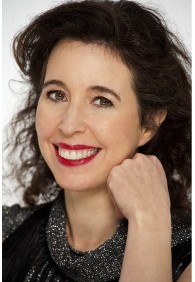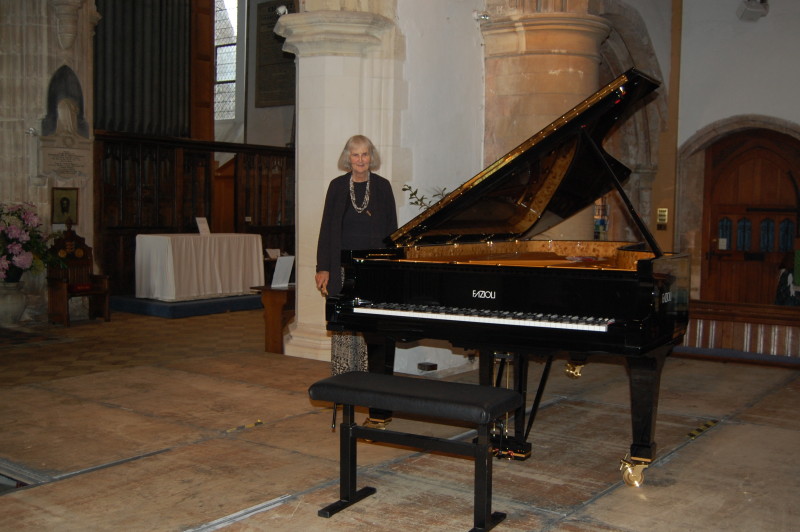
No one who heard Angela Hewitt’s piano recital in St Mary’s on the first Tuesday evening of the 2015 Rye Festival will ever forget it. Brilliantly exploiting the special sound of her Fazioli piano (pictured above), this remarkable artist dazzled her audience in a programme which was extremely testing, both technically and interpretatively. The music ranged from the early eighteenth century to the early twentieth and Angela Hewitt’s dexterity and versatility enabled her to explore fully the emotional depths of all her chosen pieces.
The two JS Bach works in the first half showed why Angela Hewitt first became celebrated as an interpreter of his music; she played the Capriccio BWV 992 and the second partita with a remarkable, disciplined accuracy which still allowed the pieces’ emotional power to be fully felt. Between these works, four of Domenico Scarlatti’s extraordinary total of 555 sonatas were revealed in all their glory by the beauty and variety of the playing.
The second half, beginning with Beethoven’s Opus 31 No.1 sonata, came from a different sound world. The Beethoven, an astonishingly original work, was communicated with an electrifying vividness. The famous accompanist and legendary teacher Harold Craxton, said that Beethoven’s sonatas, which he had edited, contained, to a very large extent, “witty remarks” and Angela Hewitt conveyed that aspect, as well as many others, with joyous vitality.
The two Spanish works which completed the published programme, sections from Albeniz’s Opus 47 Suite Espanola and Falla’s Fantasia Betica , were presented with an astounding array of sound colours and musical effects, with the pianist in total command of the most complex musical material. However, Angela Hewitt proved her true artistry by her choice of encore.
Scarlatti’s sonata:Kirkpatrick No. 38 (her favourite, she said) is a sublimely simple piece and by choosing it to succeed the pyrotechnics of the Fantasia Betica and by playing it with a deeply affecting simplicity, Angela Hewitt brought her unforgettable recital to a fitting conclusion.
[Editor’s note: This was the first of four piano concerts for the Festival, the last of which involves two pianos, and – while St Mary’s is used to staging concerts – churchwarden Anne Wood is not always as relaxed as she seems in the photo above. The Norman church is neither windproof nor leakproof so sensitive instruments can respond badly and apparently the Fazioli piano needed repeated tuning.
However its suffering was brief as early Wednesday it was replaced by another for the two concerts that day. Storage can be a problem though as the altar is evicted to make way for concert platforms, and the church itself has three pianos (in the choir room, the Clare Chapel and the main part of the church) so any concert or performance requires a certain amount of furniture moving.
Tourists too seem to pay as much attention to concert notices as they do sometimes to those saying “Service in progress”. However, during daytime performances, visitors can still go up the tower to see the views as the side door is used which opens out on to the pathway]
Photo: Kenneth Bird



